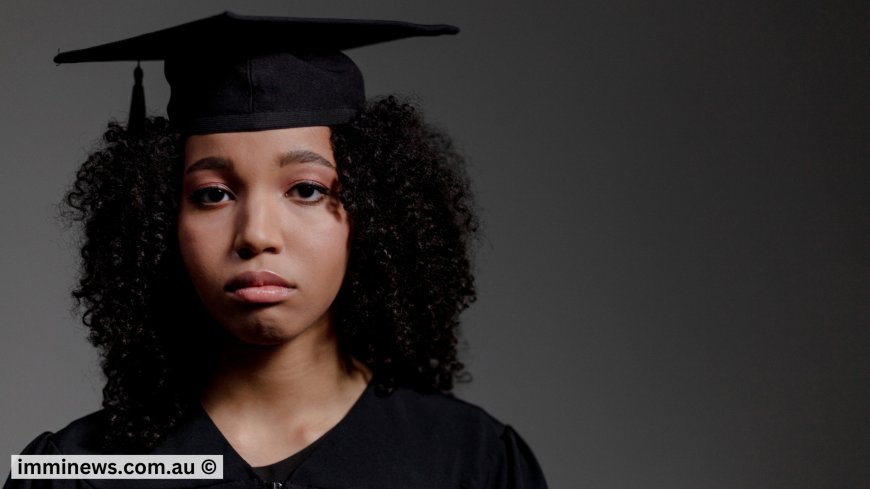Australia to Cap Student Intake & Raise Visa Fees in 2025
Australia proposes a 2025 cap on student intake to 240,000 & hikes visa charges up to $5,000. Learn its impact on migration, housing & education.

Why Australia’s New Proposal for International Students Could Reshape Immigration in 2025
As Australia heads towards its next federal election, immigration policy has taken centre stage once again. In a major political move, Peter Dutton, the Leader of the Opposition, has unveiled a controversial proposal that could significantly reshape the future of international education and student migration in Australia. Among the key highlights: a reduction in international student intake to 240,000 per year, substantial increases in student visa charges, and tighter rules on post-study work rights.
These proposed changes carry deep implications—not just for students, but for Australia’s universities, housing market, and economic outlook. Let’s delve into the significance of this proposal and why it matters in today’s Australian immigration context.
Significance of Capping International Student Intake and Increasing Visa Charges
1. Tackling the Housing Crisis by Reducing Student Numbers
One of the primary motivations behind the proposed cap is the ongoing pressure on Australia’s housing supply. With over 850,000 foreign students projected to enter Australia by 2025 under current settings, Peter Dutton’s plan to reduce this number to 240,000 aims to free up valuable rental stock for domestic residents.
This measure is positioned as a response to rising rent costs and housing affordability, especially in student-heavy cities like Sydney and Melbourne. By reducing student numbers, the Coalition argues that local renters will experience some relief, easing the housing squeeze.
According to Home Affairs Australia, student visas are a major channel of entry into the country, adding pressure not only on education systems but also infrastructure and accommodation resources.
However, this proposal could have a double-edged impact—while domestic renters may benefit, universities and regional economies that thrive on international student populations could face significant financial setbacks.
2. Redefining the Financial Landscape of Studying in Australia
Currently, applying for an Australian student visa costs much less than the amounts proposed by the Coalition. Under Dutton’s new plan:
-
Students applying to Group of Eight universities (e.g., University of Sydney, ANU, and University of Melbourne) will be charged $5,000 per visa.
-
Applicants to other Australian universities would pay $2,500.
This sharp increase in visa costs is being justified by the Coalition as a strategy to reduce the reliance of universities on international enrolments for revenue generation. However, it risks making Australia less attractive as a study destination, especially compared to other countries like Canada, the UK, and the US.
As previously discussed in our detailed breakdown of student support policies (read more here), Australia’s global competitiveness in education is already under pressure. Adding higher visa costs may further push students toward alternative destinations.
For students considering options, it’s crucial to consult reliable advisors and remain informed. You can explore guidance options through A2Zimmi’s homepage.
3. Restricting Post-Study Work Rights to Prevent ‘Backdoor’ PR Pathways
The proposal also aims to overhaul the Temporary Graduate Visa (subclass 485), which currently allows international students to remain in Australia and gain work experience after completing their studies.
According to a Coalition spokesperson, this visa is increasingly being used as a “backdoor to permanent residency,” which they argue dilutes the integrity of Australia’s skilled migration program.
Their plan involves tightening the transition pathway from student status to PR by making it harder to remain in Australia post-graduation unless specific conditions are met. This policy could affect thousands of international graduates hoping to work and settle in the country.
This move could also lead to labour shortages in sectors that typically employ international graduates, such as healthcare, engineering, IT, and hospitality—adding complexity to Australia’s broader migration strategy.
4. Impact on Universities and Regional Economies
Australia’s universities, especially those located in regional and suburban areas, have come to heavily rely on international students not just for revenue, but also for their contribution to local economies.
Limiting student intake and raising visa fees could lead to a drop in enrolment numbers, hurting local businesses that thrive on student spending. This could further reduce employment opportunities, hospitality sector growth, and even impact rental property investment in those areas.
Universities might be forced to cut courses, reduce staff, or increase domestic tuition fees to make up for the financial gap—adding strain to the entire higher education system.
5. Election Politics and Timing: Strategic or Short-Sighted?
It’s no coincidence that this proposal has emerged just weeks before the federal election. Immigration reform has historically been a vote-winner, particularly when linked to local concerns such as housing, jobs, and public services.
But is the proposal a thoughtful immigration recalibration or merely a strategic vote-puller? Critics argue that sudden changes without stakeholder consultation—particularly universities and student bodies—could backfire, damaging Australia’s international education brand.
Many believe that a balanced immigration system—which supports economic growth without overburdening infrastructure—is a more sustainable solution. As elections draw closer, more detailed immigration blueprints are expected from both sides of politics.
What Lies Ahead for Australia’s Student Migration Policy?
Australia’s international education sector stands at a crossroads. The proposed cap on student intake, along with significantly increased visa fees and a restructured post-study visa pathway, represents one of the most dramatic shifts in recent immigration history. Whether these measures succeed in achieving housing relief and system sustainability—or damage Australia’s global education standing—remains to be seen.
For now, prospective international students are advised to act swiftly. Apply early, explore alternative education providers, and seek professional guidance to navigate these changing tides.
To get expert advice tailored to your situation, book a consultation with A2Zimmi and take control of your Australian education journey today.
Visit A2Zimmi or schedule a consultation here to get expert advice today!
What's Your Reaction?
 Like
0
Like
0
 Dislike
0
Dislike
0
 Love
0
Love
0
 Funny
0
Funny
0
 Angry
0
Angry
0
 Sad
0
Sad
0
 Wow
0
Wow
0









































































































